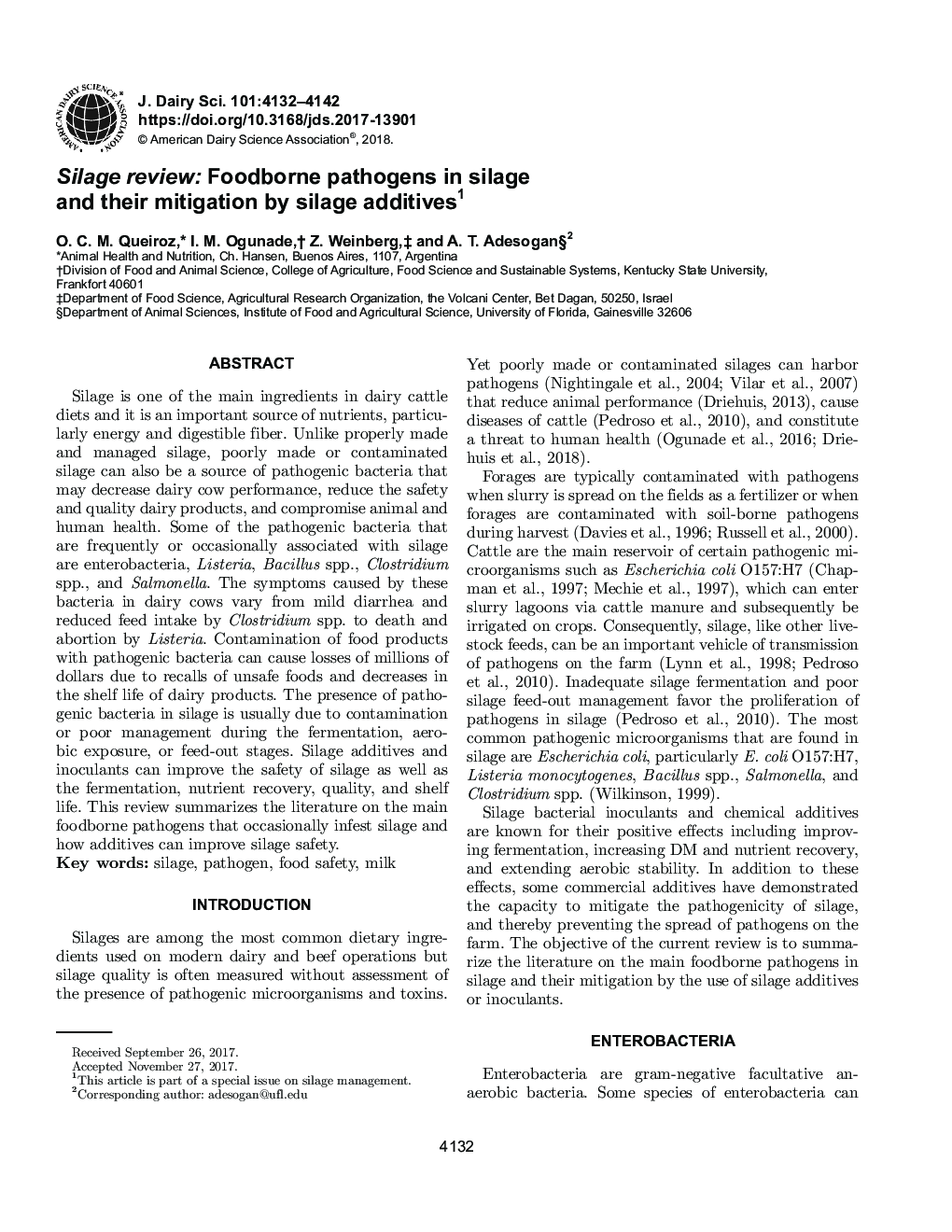| Article ID | Journal | Published Year | Pages | File Type |
|---|---|---|---|---|
| 8501261 | Journal of Dairy Science | 2018 | 11 Pages |
Abstract
Silage is one of the main ingredients in dairy cattle diets and it is an important source of nutrients, particularly energy and digestible fiber. Unlike properly made and managed silage, poorly made or contaminated silage can also be a source of pathogenic bacteria that may decrease dairy cow performance, reduce the safety and quality dairy products, and compromise animal and human health. Some of the pathogenic bacteria that are frequently or occasionally associated with silage are enterobacteria, Listeria, Bacillus spp., Clostridium spp., and Salmonella. The symptoms caused by these bacteria in dairy cows vary from mild diarrhea and reduced feed intake by Clostridium spp. to death and abortion by Listeria. Contamination of food products with pathogenic bacteria can cause losses of millions of dollars due to recalls of unsafe foods and decreases in the shelf life of dairy products. The presence of pathogenic bacteria in silage is usually due to contamination or poor management during the fermentation, aerobic exposure, or feed-out stages. Silage additives and inoculants can improve the safety of silage as well as the fermentation, nutrient recovery, quality, and shelf life. This review summarizes the literature on the main foodborne pathogens that occasionally infest silage and how additives can improve silage safety.
Keywords
Related Topics
Life Sciences
Agricultural and Biological Sciences
Animal Science and Zoology
Authors
O.C.M. Queiroz, I.M. Ogunade, Z. Weinberg, A.T. Adesogan,
